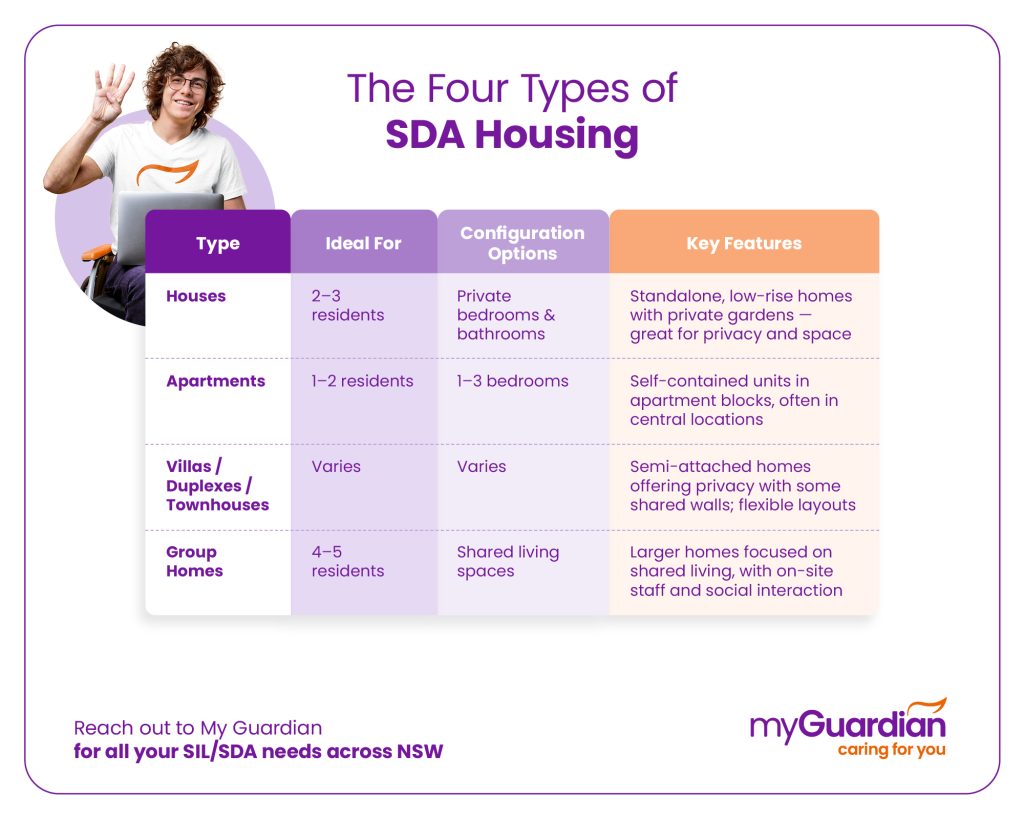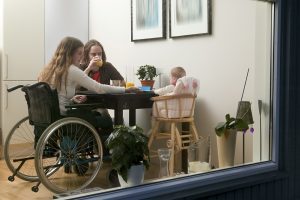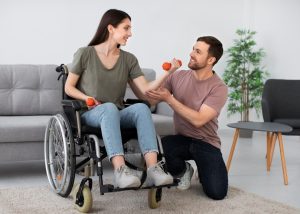Understanding Different Types of SDA Accommodation
They say, “There’s no place like home.” But what if your home could do more — like support your safety, independence, and everyday comfort?
If you or a loved one is navigating NDIS support and exploring housing options, you may have come across the term Specialist Disability Accommodation (SDA). It’s an important part of the disability care journey, but with terms like “High Physical Support” or “Robust Housing” being thrown around, it’s completely normal to feel overwhelmed.
Don’t worry you’re not alone. At My Guardian, we’re here to make things simpler.
As your trusted disability care service provider, we’ve created this friendly guide to help you understand the types of SDA housing available, so you can make the right choice with clarity and confidence.
So, What Exactly is SDA Housing?
If you’ve been hearing the term Specialist Disability Accommodation (SDA) and wondering what it really means, you’re not alone. Simply put, SDA is a type of housing specially built for people who have very high support needs or significant functional impairments. It’s not your average home, these places are thoughtfully designed to make day-to-day life easier, safer, and more comfortable.
SDA homes come in all shapes and sizes, from cosy villas to modern apartments and fully accessible houses. What makes them different is how they’re built: think wider doorways, roomy, accessible bathrooms, open-plan living, and even built-in setups for Assistive Technology (AT). Every detail is designed with the resident’s mobility, comfort, and safety in mind.
In short, SDA isn’t just about having a roof over your head, it’s about living in a space that supports you to live life on your terms.
Who Qualifies for SDA?
Just because you’re on the NDIS, doesn’t automatically mean you’ll receive funding for Specialist Disability Accommodation (SDA). The NDIS only provides SDA if it’s the most suitable way to meet your needs, compared to other supports.
You may be eligible if:
- You’re under 65 and already an NDIS participant
- You need help with daily tasks or require one-on-one support for much of the day
- SDA would help you:
- Stay independent longer or slow down any decline in your abilities
- Reduce the amount of support you need over time
- Stay better connected with family, friends, healthcare, work, or education
To apply, the NDIS will ask for supporting evidence, like a functional capacity assessment or a report from your allied health team. Your support coordinator can help pull this together.
What Else Does the NDIS Consider?
To approve SDA funding, your housing must:
- Be clearly linked to your disability-related needs
- Align with your NDIS goals and aspirations
- Support your social and economic participation (like seeing friends or finding work)
- Be good value for money, meaning the benefits outweigh the costs
- Truly improve your quality of life and independence
Types of SDA Housing
SDA homes come in a variety of shapes and sizes, each designed to suit different lifestyles, preferences, and support needs. Here’s a simple guide to help you understand the key options:
| Type | Ideal For | Configuration Options | Key Features |
Houses | 2–3 residents | Private bedrooms & bathrooms | Standalone, low-rise homes with private gardens — great for privacy and space |
Apartments | 1–2 residents | 1–3 bedrooms | Self-contained units in apartment blocks, often in central locations |
Villas / Duplexes / Townhouses | Varies | Varies | Semi-attached homes offering privacy with some shared walls; flexible layouts |
Group Homes | 4–5 residents | Shared living spaces | Larger homes focused on shared living, with on-site staff and social interaction |
The 4 Design Categories of SDA Housing – What Do They Mean?
When it comes to Specialist Disability Accommodation (SDA), not all homes are built the same, and that’s a good thing! Different people have different needs, so SDA homes are divided into four design categories, each with its own purpose and features.
These categories make sure your home matches your support needs and helps you live more comfortably and independently. Here’s a simple breakdown:
1. Improved Liveability (IL)
This type of home is designed for people with sensory, intellectual, or cognitive impairments. The focus is on making the environment easier to understand, navigate, and feel safe in.
Key features might include:
- Clear visual cues and wayfinding (so it’s easy to move around)
- Contrast between walls, doors, and floors
- Extra lighting to support daily tasks
- Simple layouts with fewer long hallways
These homes make everyday life a little easier and a lot more comfortable for those who need extra help processing their surroundings.
2. Fully Accessible (FA)
Perfect for people with significant physical disabilities, especially wheelchair users. These homes are all about easy access and movement, with no steps or tight spaces to worry about.
You’ll find features like:
- Step-free entry and movement throughout
- Wider doorways (at least 90cm)
- Bathrooms and kitchens designed for both seated and standing use
- Optional tech like automated doors, blinds, and lights
FA homes are all about mobility, giving you the freedom to move around with ease.
3. High Physical Support (HPS)
This category is for people who have very high physical support needs and may rely on specialised equipment like hoists or power chairs. It includes all the features of a Fully Accessible home and then some.
You can expect:
- Even wider doorways (at least 95cm)
- Rooms set up for ceiling hoists and other equipment
- Emergency power backup (UPS) in case of outages
- Video intercom or communication systems
HPS homes are built for people who need constant physical support, keeping safety and reliability front and centre.
4. Robust
Robust homes are made for people with complex behaviours, including those with autism or psychosocial disabilities. These houses are built tough to protect the person living there, the people around them, and the home itself.
Key features include:
- Sound-insulated bedrooms (for quiet and privacy)
- Tough materials like shatter-proof windows and reinforced fixtures
- Secure layouts with safety in mind
These homes provide a calm, safe, and low-stress environment for people who need extra space and security.
Why Choose My Guardian for Your SDA Journey?
At My Guardian, we believe that everyone deserves a safe, comfortable, and empowering place to call home. As a trusted NDIS provider, we specialise in matching participants with SDA homes that truly meet their needs, whether you’re looking for improved liveability, high physical support, or a peaceful, robust environment.
From start to finish, our friendly team supports you through the entire process, from eligibility assessments to housing applications and personalised tours. With 24/7 support options, beautiful brand-new properties, and a deep understanding of the NDIS, we make sure your transition into SDA living is as smooth and stress-free as possible.
Because at My Guardian, it’s not just about finding a house — it’s about helping you feel at home.
Reach out to our friendly team today for a free, no-obligation consultation, if you’re looking for a trusted SIL Provider or SDA housing support in NSW. We’d love to chat and help you navigate the next step. Click here to get in touch.
Browse our preferred SIL/SDA Homes across NSW here.









